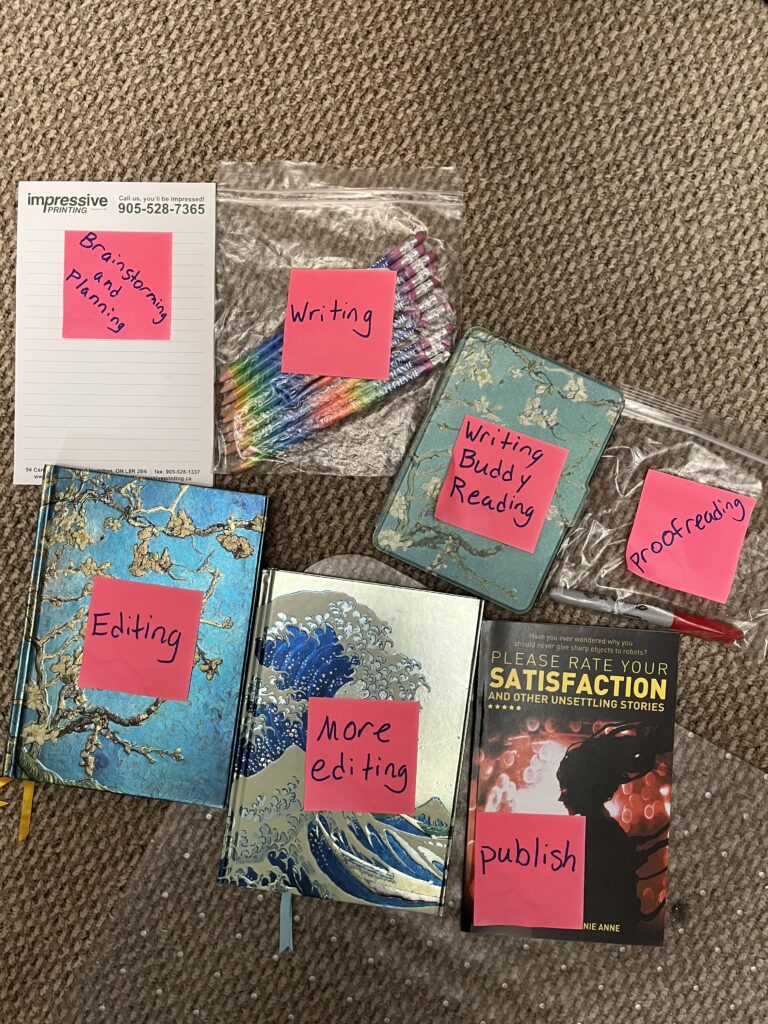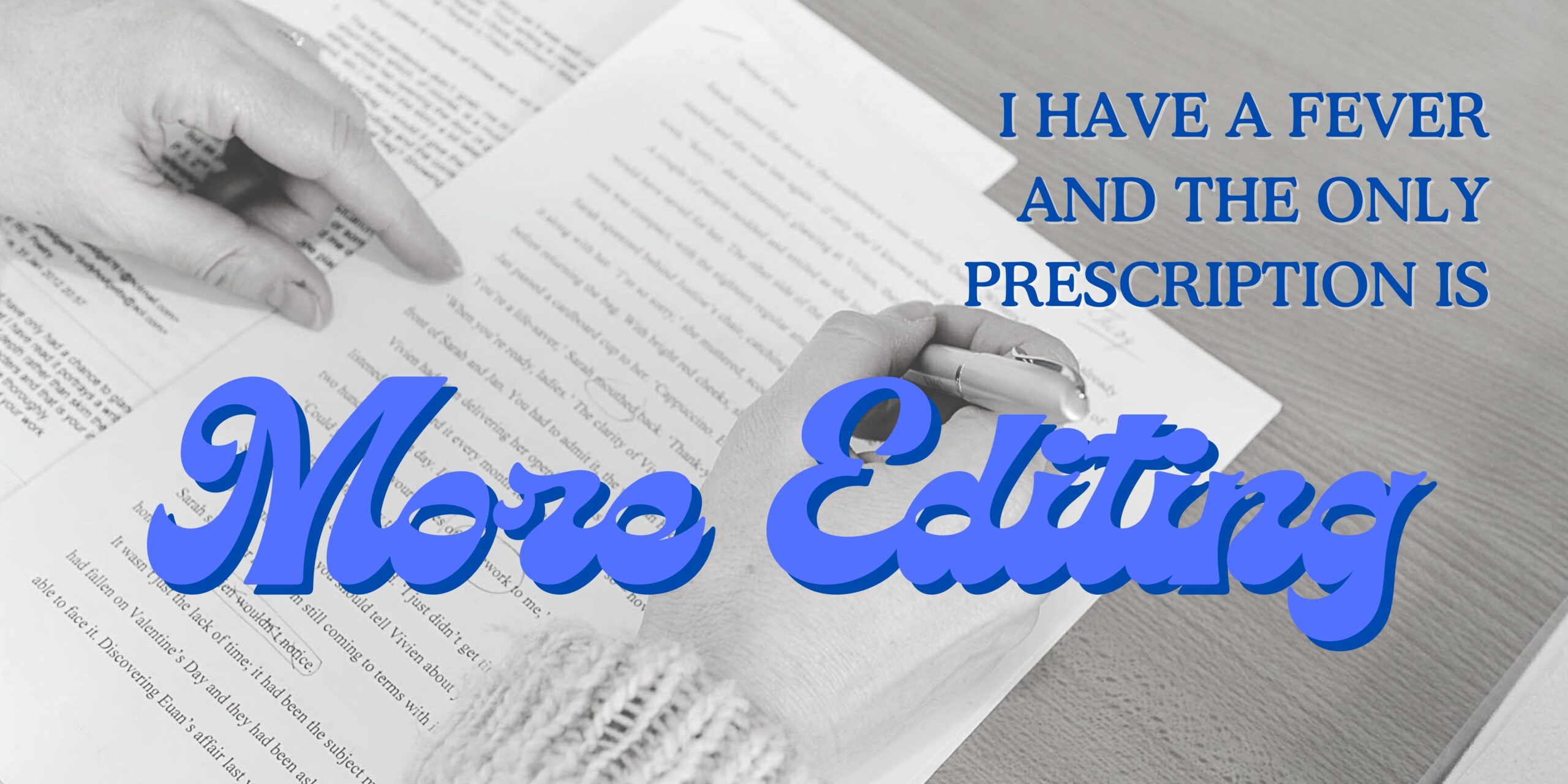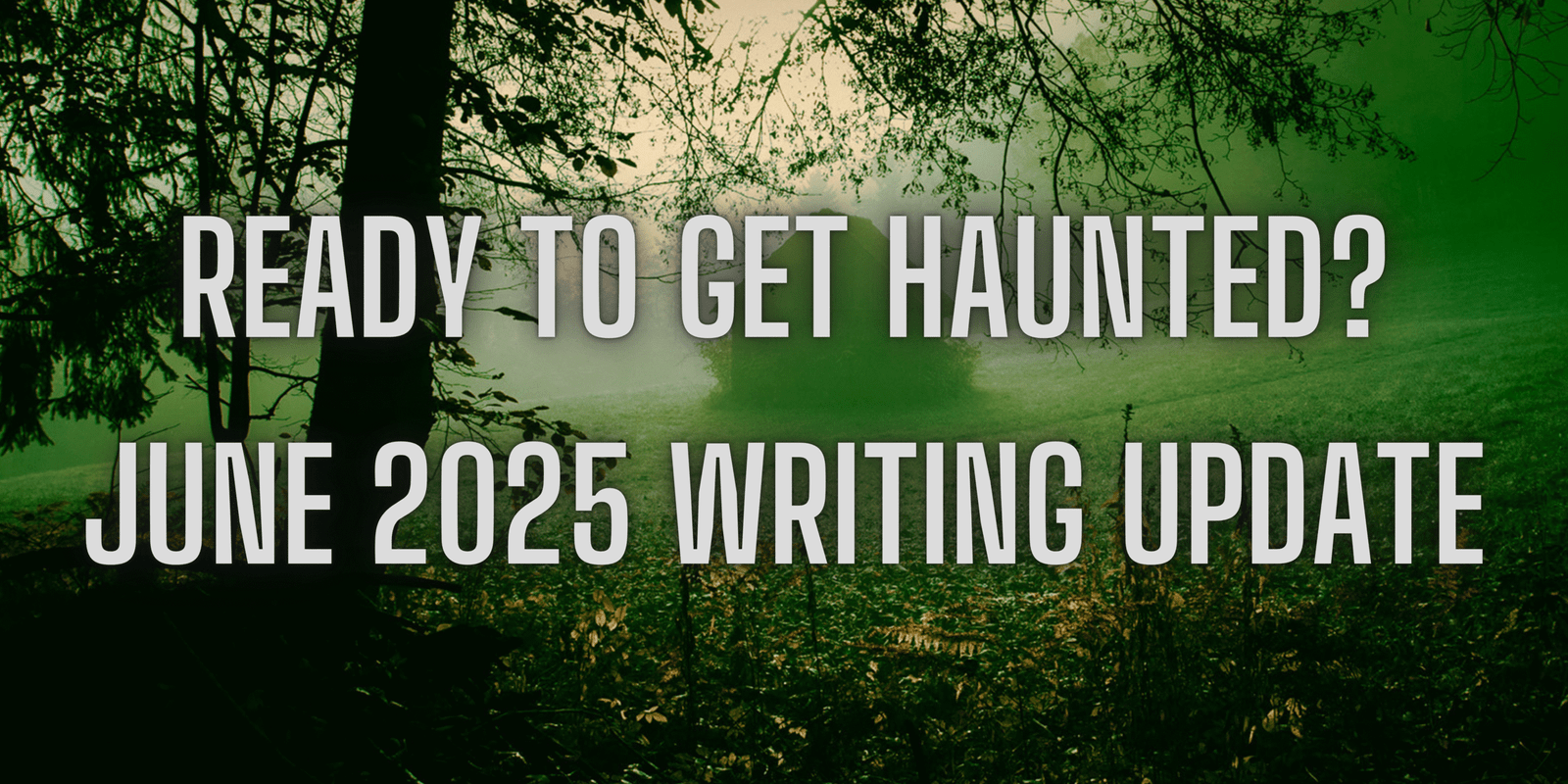If you’ve seen me bemoaning my fate on social media this week, you’ll know that I was supposed to give a talk about writing to a group of 8-year-olds. Unfortunately, Mother Nature had other plans and my talk has been rescheduled.
Now, I’m not telling you all this to whine about how that would have been the topic for this week’s blog post (although I would have loved to include pictures of one of the activities I put together). Rather, this is to give you an idea of why I chose the topic I did for this week.
Out of the 4 activities I had planned for the kids, the one I was the most excited about was a game around the writing process. That got me thinking… Based on some of the questions I’ve received by readers and fellow writers in the past, people might be interested to see what my writing process is.

Above is a picture of the elements I set up for the writing process game. As you can see, I simplified both the number of steps involved as well as the names (I do not expect 8-year-olds to know what beta reading is, or to have to sort through the more than 2 stages of editing).
Between the number of steps in my own personal writing process, and the number of projects I have planned, I have a spreadsheet consisting of 17 rows and 18 columns. Everything is colour coded to show which stories are at which stage in my writing process. I won’t share the full spreadsheet with you – as that’s just for me – but here is the all important breakdown:
- Book Title: Probably the easiest column. Colour coded to show which books are done and published, which are WIPs, and which are sitting on the backburner until a later time.
- Notebook: I don’t use physical notebooks for all of my writing projects – usually just the longer works. I have a lot of notebooks in my collection, and after a while it was hard to remember which one had which notes. Hence the creation of this column.
- Brainstorming: For this stage, I scribble my thoughts and notes onto whatever paper is nearby when my muse visits. Post-its, digital post-its, note pads, scrap paper, the notes app on my phone.
- Plotting: If you’ve listened to me and Trevor on the Writing and Robots Podcast, you’ll know that I don’t spend a lot of time on this one. Sometimes, it’s just rough notes (on a physical or digital post-it note) saying “Here’s this scene I know I want to write. Here are some things I need to do to work towards it.”
- Writing: The most important step. There’s no story without it.
- Editing 1: It doesn’t matter if the first draft is bad (in fact, I expect it to be bad). This is my first read-through to do general upgrades. This is when the notebook comes into play.
- Editing 2: Based on whatever I find during the first round of editing, I will usually have a specific goal with this draft. Maybe some things need to be beefed up. Or maybe a character is underdeveloped. This stage of editing will go on for as many drafts as needed.
- Editing 3: This is a final read-through edit to make sure I’m happy with all of the changes I made and to see if there’s anything I missed.
- AutoCrit Editing: Using their editing software, I pick through my draft to clean up anything that needs it. This is when I’ll strengthen my writing based on what their summary report suggests. I’ll also fix any grammatical errors that pop up as that tends to distract my beta readers.
- Beta Reading: This is when I need several more pairs of eyes. The beta readers will let me know if this is something my target audience will enjoy, and they’ll point out any problems that I need to fix.
- Editing: Time to implement the necessary changes based on beta reader feedback.
- Sensitivity Reading: I haven’t needed this stage of editing yet, but I will someday. I’ll need to hire readers of a specific demographic to make sure I’m handling certain topics appropriately.
- Editing: Time to implement any suggested changes, of course.
- Developmental Editing: This is not something I need for my short story collections, as there’s no overarching plot to keep in mind. But I will need this stage of editing when I work on getting my novels and novellas ready for publication.
- Editing: Had someone else look at my draft? Time to implement suggested changes!
- Copy Editing: The work is almost done! Now it’s time to send my penultimate draft off to yet another someone else so that they can look for spelling mistakes and grammatical errors.
- Editing: And it’s time for one final edit to implement this last round of suggested changes.
- Publishing: It’s over! Time to upload it to Draft2Digital and send the story out into the world.



